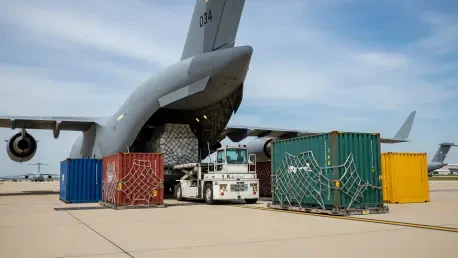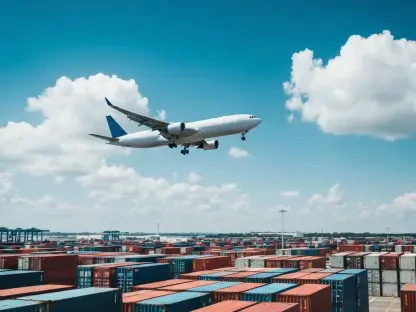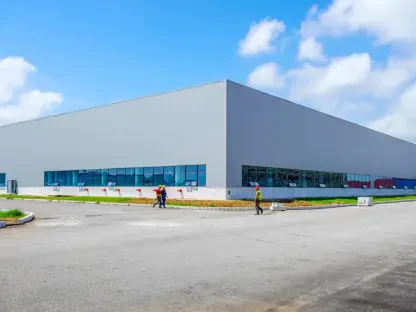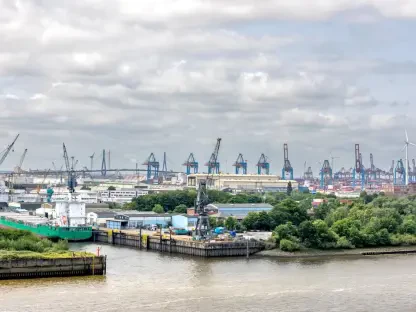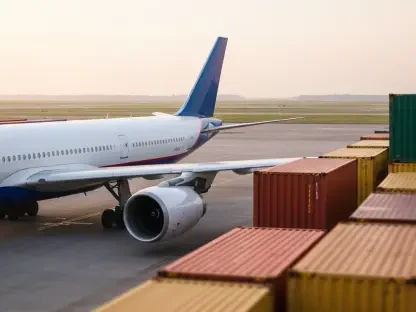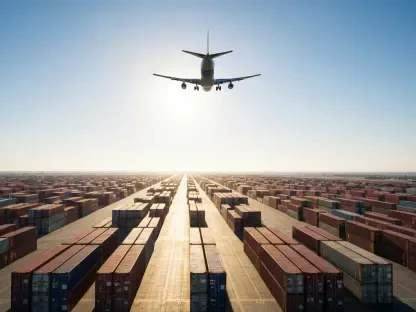In the heart of what should be the busiest shipping period of the year, air cargo rates are tumbling, defying all expectations for a holiday-driven surge, and leaving the industry grappling with an unexpected downturn. Picture a global network of planes loaded with goods, ready to meet soaring demand, only to find the anticipated rush of orders simply isn’t there. This stark contrast between past peak seasons and today’s reality raises pressing questions about the health of international trade and what it means for businesses and consumers alike. As the holiday season unfolds, the air cargo industry finds itself navigating an unexpected downturn, with rates sliding and capacity sitting idle.
Why Are Air Cargo Rates Falling at the Worst Possible Time?
Typically, the lead-up to the holidays sparks a frenzy in the air cargo sector, with rates climbing as shippers scramble to meet consumer demand. Yet, this year, the market tells a different story, with global spot rates dipping by 3% year-over-year to an average of $2.58 per kilogram. This decline, ongoing for six consecutive months as of October, has left industry stakeholders scratching their heads, wondering how a season of expected growth turned into a period of stagnation.
The mismatch between capacity and demand lies at the heart of this anomaly. While capacity has grown by 5% compared to last year, cargo volumes have lagged behind with only a 4% increase, creating an oversupply that drives prices down. Major trade lanes, which usually see a spike in activity, are instead reporting underwhelming figures, signaling deeper issues in the global supply chain that could ripple beyond just shipping costs.
This unexpected slide in rates isn’t just a seasonal quirk; it reflects broader economic currents that could reshape how goods move across borders. For businesses relying on air cargo to deliver products swiftly, this downturn might offer short-term savings, but it also hints at weakening consumer demand—a concern that looms large as the holiday shopping window narrows.
The Wider Impact of Declining Air Cargo Rates
Beyond the immediate effect on shipping costs, the drop in air cargo rates carries significant implications for the global economy. With supply chains still fragile from past disruptions, this trend could indicate underlying softness in international commerce, potentially affecting everything from retail prices to job stability in logistics hubs. A cooling market at this critical time of year suggests that consumer spending, a key driver of economic growth, may not be as robust as hoped.
For everyday consumers, the impact might not be immediately visible, but it could manifest in delayed shipments or higher costs down the line if airlines and forwarders struggle to sustain operations. Businesses, particularly small and medium-sized enterprises, face the challenge of navigating lower shipping rates while grappling with reduced sales volumes, a balancing act that could strain budgets and planning for the coming months.
The stakes are high, as air cargo serves as a barometer for global trade health. If demand continues to falter, the ripple effects could dampen confidence in economic recovery, making this rate decline a story that extends far beyond the cargo holds of airplanes and into the livelihoods of millions who depend on a thriving trade ecosystem.
Key Factors Fueling the Rate Decline
Several intertwined factors are pushing air cargo rates downward, starting with the glaring imbalance between supply and demand. As capacity outpaces cargo volume growth, airlines find themselves with more space than goods to fill, a situation that inevitably depresses pricing. This oversupply is particularly evident in the lack of a peak season surge, with demand growth described as subdued across critical corridors.
Regionally, the numbers paint a grim picture: the Europe-to-North America route has seen a 6% year-over-year drop in demand, while spot rates on Southeast Asia to North America and Northeast Asia to North America lanes have fallen by 21% to $4.84 per kilogram and 10% to $4.37 per kilogram, respectively. Additionally, policy shifts are exacerbating the slump, with the end of the U.S. de minimis exemption leading to a staggering 34% volume drop on the China-to-U.S. lane since its termination in late August. These specific declines highlight how localized issues can amplify global market challenges.
External pressures, such as shippers reducing frontloading to avoid new tariffs, further compound the problem, stripping away the usual momentum of pre-holiday shipping. Together, these elements—oversupply, regional demand weakness, and regulatory changes—form a perfect storm, dragging rates down and challenging the industry’s ability to adapt to rapidly shifting conditions.
Industry Perspectives on a Struggling Market
Voices from within the air cargo sector underscore the gravity of the current downturn, offering a glimpse into the mindset of those on the front lines. Niall van de Wouw, a prominent figure in airfreight analysis, has warned of continued rate declines as forwarders engage in fierce competition for dwindling business. His assessment points to a market where short-term cost benefits for shippers are overshadowed by the broader concern of stagnant sales growth.
This sentiment is echoed in recent cost-cutting announcements from major companies, a clear sign that the industry is bracing for tougher times ahead. Shippers, while appreciative of lower freight costs, are reportedly uneasy about what these savings signify—a potential slowdown in consumer demand that could hurt their bottom line more than high rates ever did. Such mixed feelings reveal the complex dynamics at play, where financial relief comes with a side of uncertainty.
These expert insights and market reactions add a human dimension to the cold data, illustrating how the rate drop is not just a statistical trend but a lived reality for countless professionals. Their concerns paint a vivid picture of an industry at a crossroads, forced to rethink strategies in the face of an unusually quiet peak season.
Strategies for Adapting to a Changing Landscape
For stakeholders caught in this downward spiral of air cargo rates, actionable steps are essential to weather the storm. Shippers can capitalize on lower rates by negotiating favorable long-term contracts, but they should also hedge against volatility by diversifying transport options, such as combining air and sea freight to manage unpredictable volumes. Flexibility in planning will be key to avoiding disruptions.
Airlines and forwarders, on the other hand, might find relief by targeting niche markets or focusing on high-value cargo that commands premium rates, offsetting losses from oversupply. Investing in operational efficiency, such as optimizing flight schedules or adopting digital tools for better load planning, can also help maintain competitiveness in a crowded market. These targeted approaches aim to carve out stability amid widespread uncertainty.
All parties involved should keep a close eye on policy developments, such as tariff adjustments or trade agreements, which have proven to significantly influence demand. Leveraging data analytics to forecast trends and adjust strategies accordingly will be crucial for staying ahead of market shifts. By adopting these practical measures, stakeholders can transform challenges into opportunities, navigating the new normal with informed decision-making.
Reflecting on a Season of Missed Opportunities
Looking back, the air cargo industry faced a peak season that defied expectations, with rates slipping and demand faltering when both should have soared. The stark reality of oversupply and policy-driven volume drops painted a challenging picture for shippers, airlines, and forwarders alike. Each struggled to find footing in a market that refused to follow its usual rhythm.
As attention turned toward the future, the focus shifted to building resilience through smarter contracts, diversified logistics, and a keen awareness of regulatory changes. Stakeholders recognized that adapting to such an unpredictable landscape required not just reaction, but proactive innovation to safeguard against further downturns. The lessons learned promised to shape strategies for seasons yet to come.
Ultimately, the path forward demanded a commitment to agility and foresight, ensuring that the industry could rebound stronger. Exploring untapped markets or investing in technology to predict demand swings emerged as vital next steps. These efforts aimed to transform a period of struggle into a foundation for sustainable growth, offering hope amidst the turbulence.
